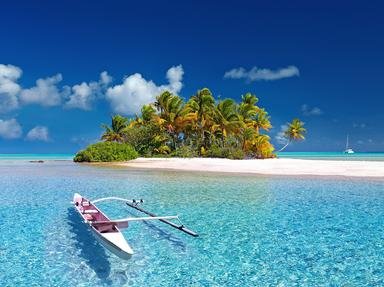Quiz Answer Key and Fun Facts
1. Barrier islands are found on coastlines all over the world. Where are they the most noticeable in North America?
2. Barrier islands are long, narrow offshore deposits of sand or sediments that parallel the coastline.
True or false? They are permanent and never change.
3. Barrier islands are separated from the mainland by a shallow sound, bay, or lagoon. They are often found in chains and separated from each other by what?
4. The structure of a typical barrier island consists of four zones or habitats. Starting from the ocean side, the first zone is the 'beach', which is the sand deposited by the actions of waves. Which of the following is the only plant life you'll find in the beach habitat?
5. The second zone, or habitat, of a barrier island is the 'dune'. Dunes are formed from sand carried and deposited by ____.
6. Beyond the dunes is the third barrier island habitat, which is known as the 'barrier flat'. Which of the following is NOT another name for this habitat?
7. The sound-side of a barrier island is usually dominated by the 'salt marsh'. This zone is generally divided into high and low marsh areas. What is the difference between high and low marshes?
8. The most dramatic changes to barrier islands are caused by storms, particularly hurricanes. The above-normal water level that results from low atmospheric pressure and high winds is known as what?
9. It is OK for people to walk and drive vehicles on sand dunes?
10. What is the name for barrier islands which are attached to the mainland at only one end?
Source: Author
catnippin
This quiz was reviewed by FunTrivia editor
Pagiedamon before going online.
Any errors found in FunTrivia content are routinely corrected through our feedback system.
